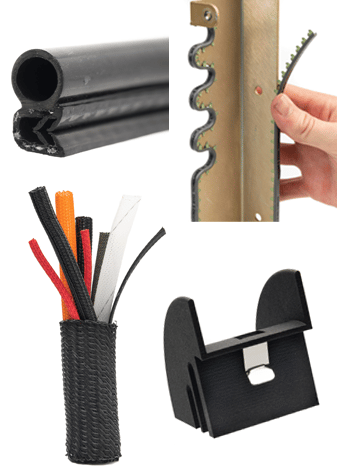Before we get to the squitter portion let's confirm the basics:
Note the deadline has passed but there is still valuable information here.
ADS-B Out
- Must be in place by 1/1/2020
- Cannot be a portable device
- Requires Certified (TSO) WAAS GPS Source
- STC/TSO Requirements for Installation
- Operate on 978 MHz UAT or 1090MHz ES
ADS-B In
- Optional – not required for mandate
- May be used on an “installed” or portable device
- Subscription free Traffic and Weather
- Many display options available e.g. iPad
Core Benefits of the Mandate
The overarching benefit is increased safety in flight but also through more efficient routing ATC will also be able to reduce:
- Congestion
- Fuel consumption
- Emissions
 Do I have To Extend my Squit?
Do I have To Extend my Squit?
Yes indeed! On 1/1/2020, anyone in regulated airspace which needs a Mode C transponder now, will need to have an FAA-approved ADS-B system on board. Your transponder can be a key part of meeting the new avionics requirements.
ADS-B (Automatic Dependent Surveillance-Broadcast) technology will be replacing conventional radar-based surveillance as the main method for identifying and tracking aircraft in U.S. airspace.
Using the ADS-B datalink, each airplane will automatically transmit its precise position, its velocity (both vertically and horizontally), as well as its altitude and other information to controllers and other nearby aircraft. Each plane will need a WAAS-capable GPS receiver to provide high-integrity location and flight path data for ADS-B networking.
ADS-B Mandate: Out but Not In
Only ADS-B “Out” transmission capability is required. Not ADS-B “In.” However, the “In” version which receives the tracking data for display in the cockpit — should be a popular upgrade, as it helps situational awareness by giving pilots a view of the same basic traffic data that ATC is monitoring.
An added inducement is that ADS-B “In” includes free datalink weather and various other flight information services.
The FAA has already implemented the nationwide infrastructure of ground stations needed to support ADS-B providing ADS-B coverage for>95% of contiguous US airspace.
How to Comply with ADS-B
The two key questions facing pilots and aircraft owners are:
1) “What equipment will I need in my aircraft?”
The FAA has designated two options for airborne equipment that will satisfy the ADS-B “Out” requirement:
- the dedicated 978 MHz universal access transceiver ( UAT), and
- the pairing of a 1090 MHz Mode S “extended squitter” transponder with an approved GPS navigation source (such as WAAS GPS) to provide the required position, vector, altitude, and velocity data.
2) “How much will it cost?”
The costs vary widely from aircraft to aircraft, particularly if you add on installation costs.
Early on, the avionics required to comply with the mandate ranged from $10,000 – $20,000 but as new products have come online, the costs have come down considerably. It will depend on what you fly, but you'll be paying a minimum of $5,000 on average. As the deadline approaches – given supply and demand – expect prices to fluctuate both up and down.
One of the growing challenges for operators will be that as the deadline approaches, available spots at MROs will decrease, which might mean some plans miss the deadline. With less than a year to go, the rush should be on if you want to keep flying.
1090ES vs. 978 UAT Key Differences
Despite being called a “Universal Access” transceiver, the 978 MHz UAT option gives you less freedom while flying than the 1090 MHz “ES” transponder.
For aircraft operating over 18,000 ft MSL, the FAA will require 1090 ES transponders; whereas the 978 UAT transceiver is limited to aircraft that operate no higher than 17,999 ft MSL.
However, no country except the U.S. has accepted the 978 MHz UAT format for their ADS-B datalinks; so if you want to fly outside the U.S., you will need the 1090 ES transponder for ADS-B “Out.”
The FAA has decided to retain its Mode C/S transponder requirements for flight to provide a secondary radar backup to ADS-B, as well as communicate with other aircraft that have traffic warning systems. The 1090 ES solution can satisfy both the ADS-B “Out” and functioning transponder requirements with the same piece of equipment.
The Core Technology: Squawking vs. Squittering
A “squawk” is a response a transponder makes to an ATC interrogation, a “squit” is a transmission that routinely sends aircraft ID and positional information – without being interrogated.
If you’ve ever flown with a Mode S transponder, you’ve already done a lot of “squittering.”
Mode S (S= select) was developed in the 1970s to use existing ground-based secondary surveillance radar (SSR) to track onboard transponders more precisely and efficiently while reducing the number of interrogations required to ID and follow aircraft on radar.
The idea behind it was that it cut the need for back-and-forth interrogation/response over the air, so minimizing transmitted “chatter” in the system and thereby increasing its target-handling capacity.
So a Mode S transponder would periodically “squit” the aircraft-tracking data without interrogation from ATC.
Extended Squitter (ES) = More Data per Squit
ADS-B will use an Extended Squitter.
With Mode S transponders, the squit would only send the most basic aircraft identification, system status and pressure altitude information — which ATC’s computers would correlate with radar tracking information to derive aircraft position, direction of flight, airborne velocity, vertical climb/descent, and so on.
Under ADS-B, each aircraft’s GPS navigation system will generate all of this data, and then transmit it at least once per second using an “extended squitter” — allowing ground controllers and other aircraft in the vicinity to track each airplane’s flight path with much greater precision and accuracy.
The ES format is capable of carrying much more data than the short squit Mode S:
ES = 49 parameters
Mode C = 3 parameters
Non-extended Mode S = 7 parameters
The 978 MHz UAT “Out” has the same basic data transmission elements as ES — however, it uses a different frequency.
Eventually, when the ADS-B transition is complete, the higher capacity ES will allow controllers to see not only what each aircraft is doing, but also the intended course you entered into your nav system.
With this technology, ATC controllers will finally become the mind readers pilots thought they were all along.
How DTi Can Help
Operators and MROs know that during this install, rarely exposed compartments will be opened. This is a perfect opportunity to inspect/replace/install grommets to protect the EWIS and avoid equipment discrepancies – which are often traced to wiring problems rather than equipment issues.
DTi’s Spring-Fast® best-in-class grommets install for 49% of the cost of the old slow legacy nylon grommets with glue. They install in 1/10 of the time with finger pressure. Minimal inspection. No fixturing. No curing.
This best-in-class EWIS protection helps eliminate chafe-induced arc, spark, and combustion.
Spring-Fast® best-in-class grommets can be purchased at our distributor EDMO.
Source : Some data from Garmin

